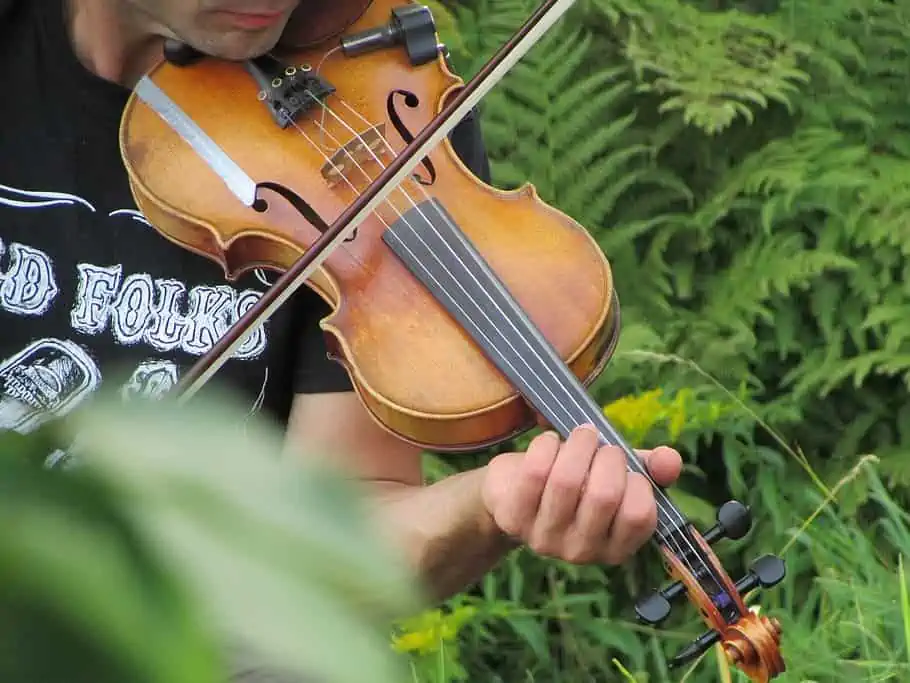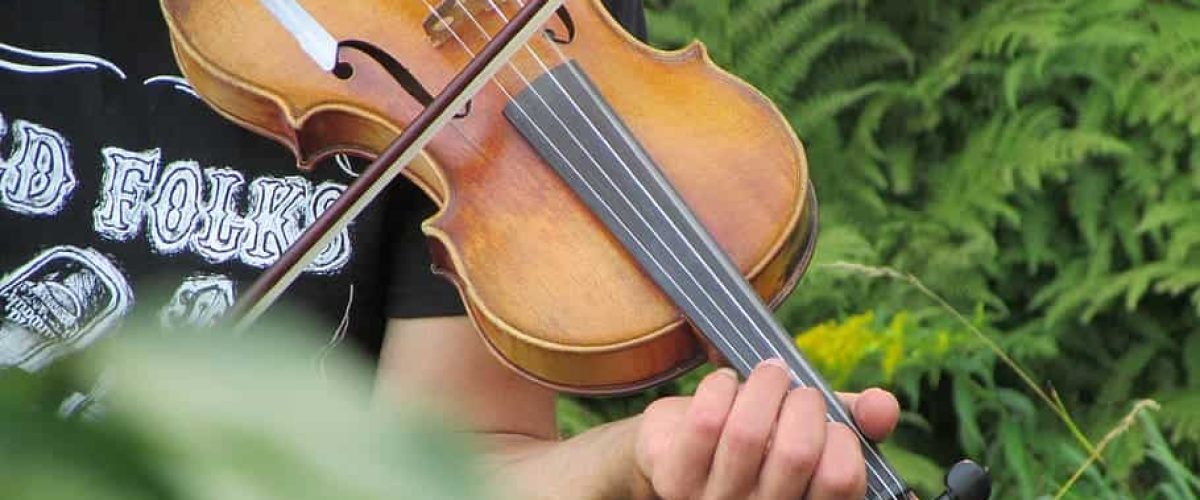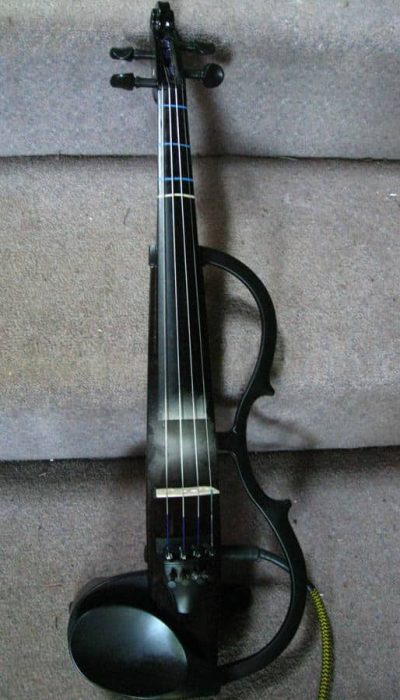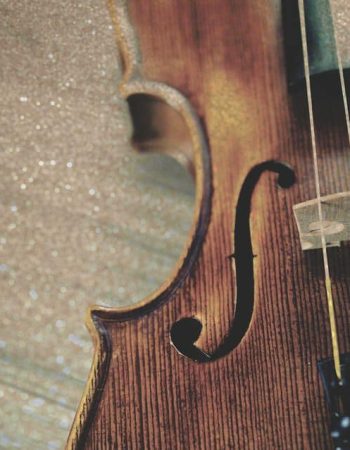How To Choose A Violin
Congratulations! You are about to buy your first violin...
Finding the ideal violin feels like a grand adventure, but it can also seem a tad daunting. This part of our Beginner’s Guide To Learning Violin provides invaluable help as you embark on your musical journey, teaching you how to select the perfect instrument.

Things you should know before buying your first violin
- What sort of budget do you have? Remember, as with most things in life; you get what you pay for – so try to have the largest budget you can afford.
- Who is playing the violin – if the violin is for a young child you may want a different model from one for an adult learner. There are many different sizes of violin. The most common are ¼, ½, ¾ and full size.
- Do I want to rent or buy? Renting can be a good option, especially if you are not sure if the beginner will still want to play in a few months’ time. The violin can be a tricky instrument to begin with, so renting allows for flexibility. Renting is a sensible choice for a growing child, enabling you to swap the violin for a larger size when needed.
- How high quality does the violin need to be? If you are an adult learner who might wish to play in amateur orchestras and chamber ensembles you might want a fairly high-quality instrument. If the beginner is a child, while quality is important, it may be of greater importance that the violin is sturdy and can withstand visits to school.
- As well as the violin, you will also need to purchase a bow, a shoulder rest, rosin and a case in which to carry your violin. Often these are offered as part of a set, but you should check before purchasing. You may also like to purchase a set of spare strings.

Types of Violin
The violin is a member of the string instrument family. It is made out of wood and generally has four strings – G, D, A and E. It is played by drawing a bow across the strings or plucking them with your fingers.
There are three types of violin – the traditional acoustic instrument, the electric violin and the fiddle.
It is almost always a good idea to begin on an acoustic violin. However, we have explained the differences between the three types of instrument below:
Traditional violin
The violin as we know it today is first recorded in northern Italy in the 16th century. It quickly became popular with both the nobility and with street musicians, with instruments becoming available across Europe. Today instruments made by Italian makers, such as Antonio Stradivari, are still seen as the finest instruments in the world.

– A violin has four strings: G (the lowest), D, A and E (the highest).
– Violins are made from wood.
– They are hollow instruments.
– The strings of a violin were originally made from animal gut. They are now generally made from steel or synthetic materials.
The beginner violin we totally recommend is the Stentor Student Stand model that you can see below:

DESIGNED FOR: Entry-level student violin
COMES WITH: Hard case and bow
FEATURES: Solid tonewoods and a durable straight grained fingerboard
COMES WITH: Hard case and bow
FEATURES: Solid tonewoods and a durable straight grained fingerboard
8/10
Stentor Student Standard Violin
When you check the price above, you’ll see there are loads of great places to buy this item. Our personal favorite is Gear4music.
It is the largest music retailer in the UK and fast becoming the most respected online music shop in the US too. Their customer service is excellent, they have competitive prices, really fast shipping, and usually have the longest guarantee.
Most professional musicians use Gear4music, so there is no reason why you shouldn’t too!
PROS
- Includes a hard case to protect the violin, and a bow
- Quality wood used
- Fine tuners included
- Aesthetically pleasing - dark varnish finish
- The bow is made from horse hair and has an ebony frog
CONS
- Shoulder rest is not included
- You may want to replace the factory strings with better quality strings as you or your child progress so that a warmer sound can be achieved
- Rosin is not included
The TedScore™ is our unique system of scoring products.
The professional musician who wrote this article combined many things,
from the product build, manufacturer’s reputation through to feedback
from other users, to create our famous TedScore™.
The professional musician who wrote this article combined many things,
from the product build, manufacturer’s reputation through to feedback
from other users, to create our famous TedScore™.

Electric violin
Violins have been electrically amplified since the 1920s. To begin with they were traditional instruments which had an electronic sound output. Today there are also purely electrical instruments available to buy. These are known as ‘solid-body’ instruments.
- The traditional violin is made of a hollow structure that amplifies the vibrations of the strings. The electric violin is generally made of a solid structure and must be connected to an amp to be heard.
- A traditional violin has 4 strings. It is not unusual for an electric violin to have five or six strings.
- Traditional violins meet standards of size and design, are made from wood and have a generally similar appearance. Electric violins can be any colour or design and are made from a range of materials.
Fiddle
The violin and the fiddle look the same, it is how they are played and the performances for which they are used which are the main differences between them.
- Violins are generally used in performances of classical, jazz and country music. In contrast, fiddles are played in performances of folk, Celtic and bluegrass music.
- A violin has four strings, while a fiddle often has five.
- Violins generally use synthetic strings while fiddles use steel core strings.
- Violinists learn from a teacher, while fiddle players are often self-taught.

The Bow

As well as a violin, you will also need a bow – a wooden stick with hair attached to it. In order to make a sound, the bow is drawn across the strings of the violin. The hair of the bow can be tightened to different tensions and is coated in rosin.
- The hair of violin bows is traditionally made of horsehair.
- Rosin is the hardened sap of the pine tree and comes in yellow or black cakes, which produce a white powder when rubbed. Rosin powder is sticky, which helps the bow to draw sound from the strings.
- Carbon fibre bows are now also popular. These can be a good option for students due to their hard-wearing properties.
The Shoulder Rest

As well as the violin and bow you will also need a shoulder rest. These allow the player to feel more comfortable when playing the violin, as it adds height to the violinist’s shoulder and helps keep the violin in place.
- It may be made of wood, aluminium, carbon fibre or plastic.
- It was invented in the twentieth century and is, therefore, a recent invention.

DESIGNED FOR: Any beginner to intermediate player
FEATURES: A Patent Pending Grip Design
OTHER INFO: Adhesive Is Included
9/10
Everest Shoulder Rest
When you check the price above, you’ll see there are loads of great places to buy this item. Our personal favorite is Gear4music.
It is the largest music retailer in the UK and fast becoming the most respected online music shop in the US too. Their customer service is excellent, they have competitive prices, really fast shipping, and usually have the longest guarantee.
Most professional musicians use Gear4music, so there is no reason why you shouldn’t too!
PROS
- Has extremely grippy feet, so doesn't slip off the Violin and the height can be adjusted.
- It has a wide, really grippy foam pad which doesn't slip on the shoulder.
- It feels solid, and there are no components that snap.
- It is not too expensive and there is now a cool range of colours!
CONS
- This is less adjustable than other brands (the feet angle cannot be changed) and has less height adjustment compared to other brands.
The TedScore™ is our unique system of scoring products.
The professional musician who wrote this article combined many things,
from the product build, manufacturer’s reputation through to feedback
from other users, to create our famous TedScore™.
The professional musician who wrote this article combined many things,
from the product build, manufacturer’s reputation through to feedback
from other users, to create our famous TedScore™.
How To Choose A Violin - Summary
Let’s keep things easy…
- It is almost always a good idea to begin learning the violin on a traditional classical instrument.
- You will need a bow and shoulder rest as well as a violin. Beginner bows often come as part of a beginner violin package, but not always. You will need to purchase a shoulder rest separately.
- Renting a violin, at least to begin with, provides you with flexibility.
Hopefully that helps you make up your mind about what type of instrument to buy. Now you’ll need to do some research over which exact model to go for. Lucky for you, we do just that! Just click here to read our violin, bow and electric violin reviews.
About the Author
Fiona Gibbs
Fiona Gibbs is a violinist and academic based in London. After reading Music at King’s College, London she commenced doctoral studies at the Royal College of Music. Since graduating in 2018 Fiona has worked as a freelance violinist and academic across the UK. She has performed at the Royal Albert Hall with Cinematic Sinfonia, and for members of the Royal Family during her time at the RCM. Aside from music, Fiona loves to travel and explore new places in the UK and abroad, visiting Australia and Cuba in recent years.
Other posts by this author
Just What Are The Four Things That I Would Like To Showcase?
Every Friday, I send a unique email with all the four most awesome things I’ve reviewed or used that week.
We guarantee no junk. Merely one single email, every week, with a few fantastic ideas and advice on anything I’ve learned that I believe you’ll like. It could be music, musical instruments, books, cool gadgets. Anything at all. Provided that it’s great.
These ‘4-Feature Friday’ emails are only available when you join my e-mail newsletter.
Read the next post in this series:




